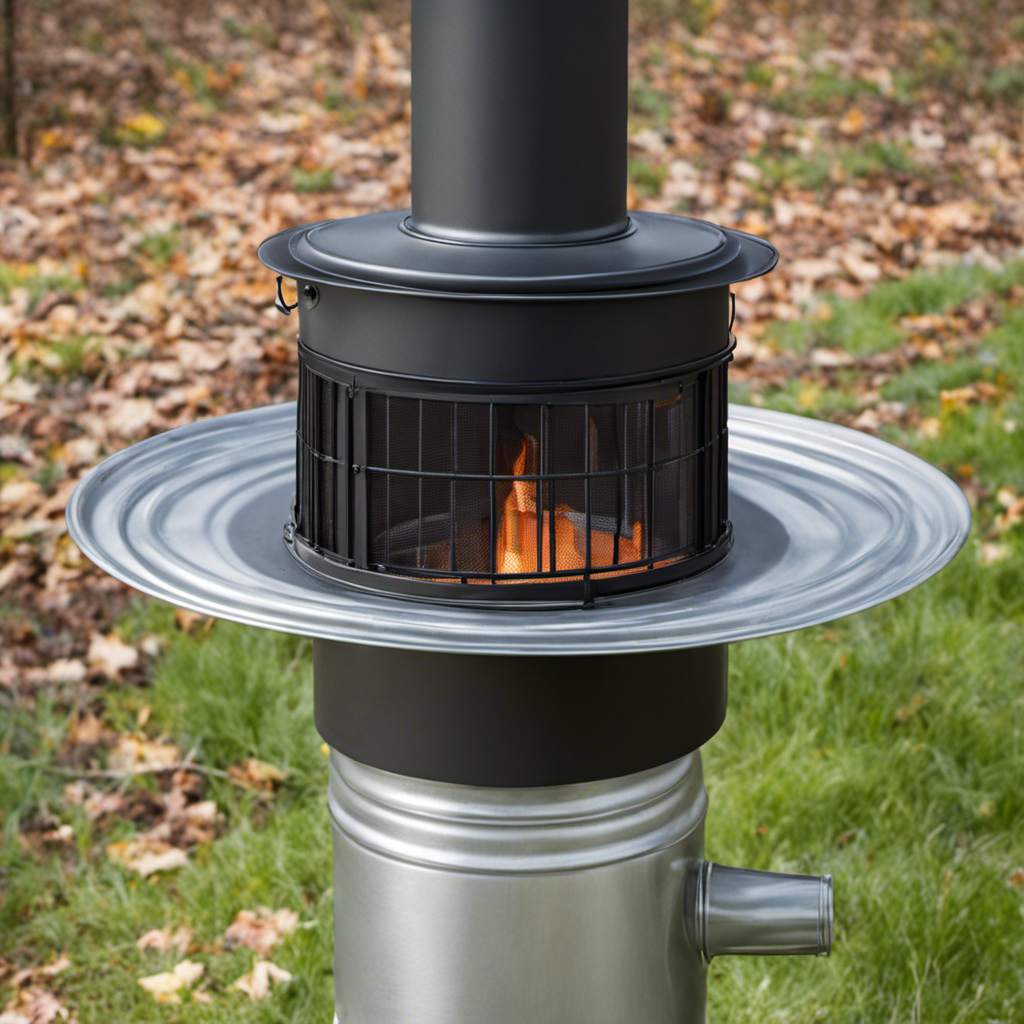Much like a conductor directs the flow of air, a damper located on a wood stove is essential for temperature control and maximizing efficiency.
In this article, I’ll guide you through the purpose of a damper, how it regulates airflow, and different types available for wood stoves.
With my expert tips and advice, you’ll learn how to maintain and use a damper properly, ensuring a warm and cozy experience every time you light your stove.
Key Takeaways
- Dampers play a crucial role in regulating airflow and heat output in a wood stove.
- Proper installation and maintenance of dampers are essential for maximizing efficiency and performance.
- Different types of dampers, such as manual, automatic, bypass, barometric, and catalytic dampers, offer various benefits for improving combustion efficiency and reducing emissions.
- Regular cleaning, inspection, and lubrication of dampers are necessary to ensure smooth operation and prevent creosote or debris buildup.
The Purpose of a Damper
The purpose of a damper is to regulate the airflow in a wood stove. It plays a crucial role in maintaining the efficiency and functionality of the stove. By controlling the amount of air that enters and exits the stove, the damper allows for better heat control and combustion.
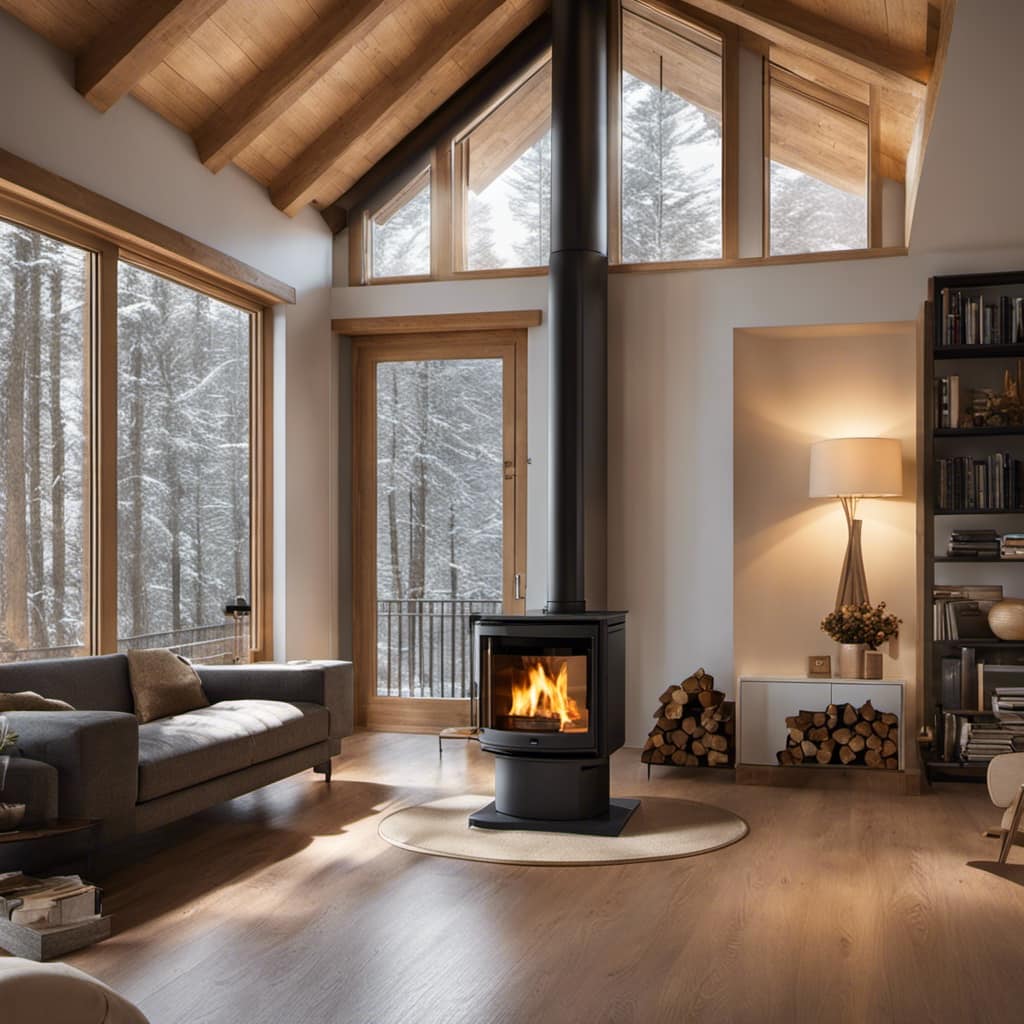
One of the main benefits of using a damper is the ability to adjust the burn rate of the fire. By opening the damper, more oxygen is allowed into the stove, resulting in a higher burn rate and more heat production. Conversely, closing the damper restricts the airflow, leading to a slower burn rate and less heat output. This level of control is especially important when trying to maintain a consistent temperature or when trying to extend the burn time of the fire.
Another benefit of using a damper is the reduction of smoke and emissions. By properly regulating the airflow, the damper helps to optimize the combustion process, resulting in a cleaner and more efficient burn. This not only reduces environmental impact but also improves indoor air quality.
How a Damper Regulates Airflow
A damper is a crucial component in regulating the airflow in a wood stove. It works by controlling the amount of air that enters the firebox, thus affecting the combustion process.
When the damper is open, more air is allowed in, resulting in a hotter and more intense fire.
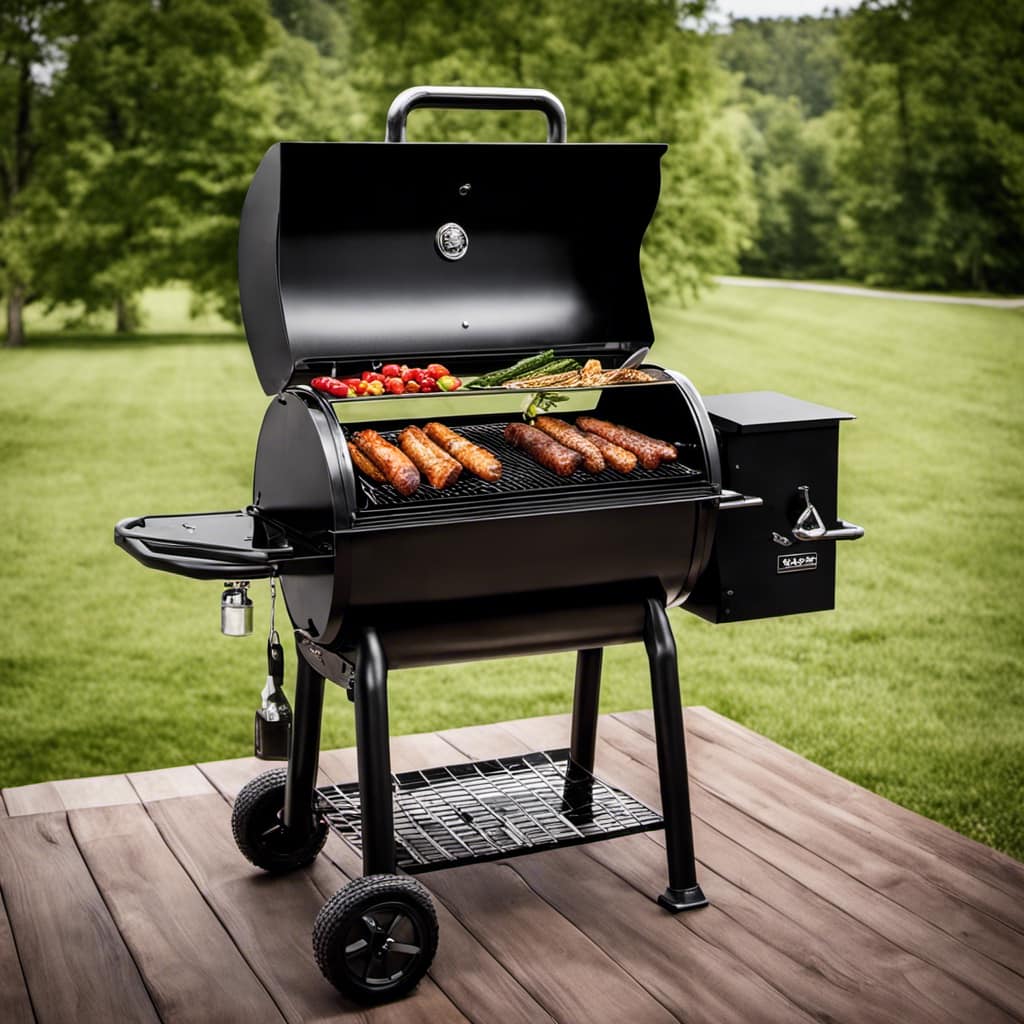
Conversely, closing the damper restricts airflow, reducing the fire’s intensity and conserving energy.
Importance of Damper
I can’t stress enough how crucial the damper is for regulating the airflow in a wood stove. Without proper maintenance and care, the damper can become clogged or malfunction, leading to a host of issues.
Here are some reasons why the damper is so important:
Proper maintenance of the damper ensures efficient burning of wood, maximizing heat output and reducing energy waste.
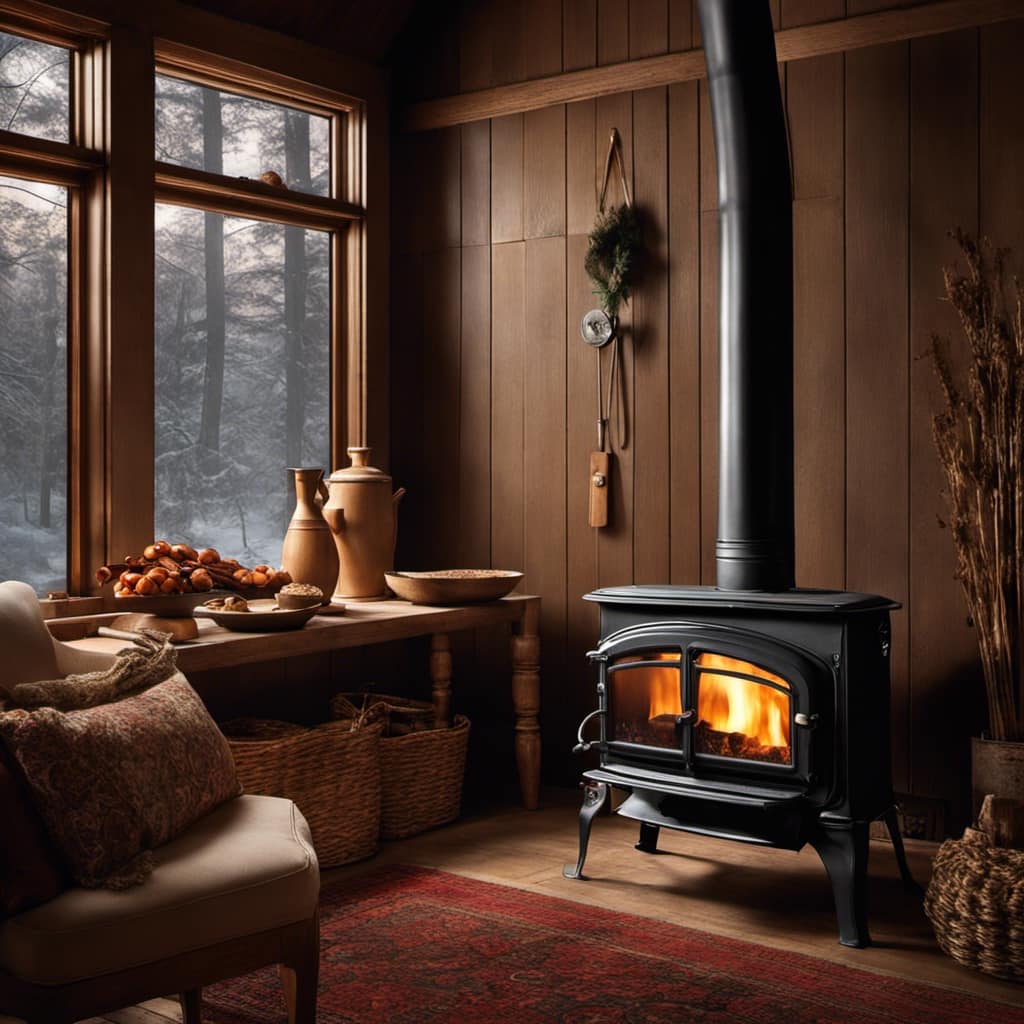
A well-functioning damper prevents smoke from entering the room, keeping the air clean and safe to breathe.
Troubleshooting common damper issues:
If you notice a lack of heat or excessive smoke, check if the damper is fully open or closed.
If the damper is stuck or not moving smoothly, it may need lubrication or adjustment.
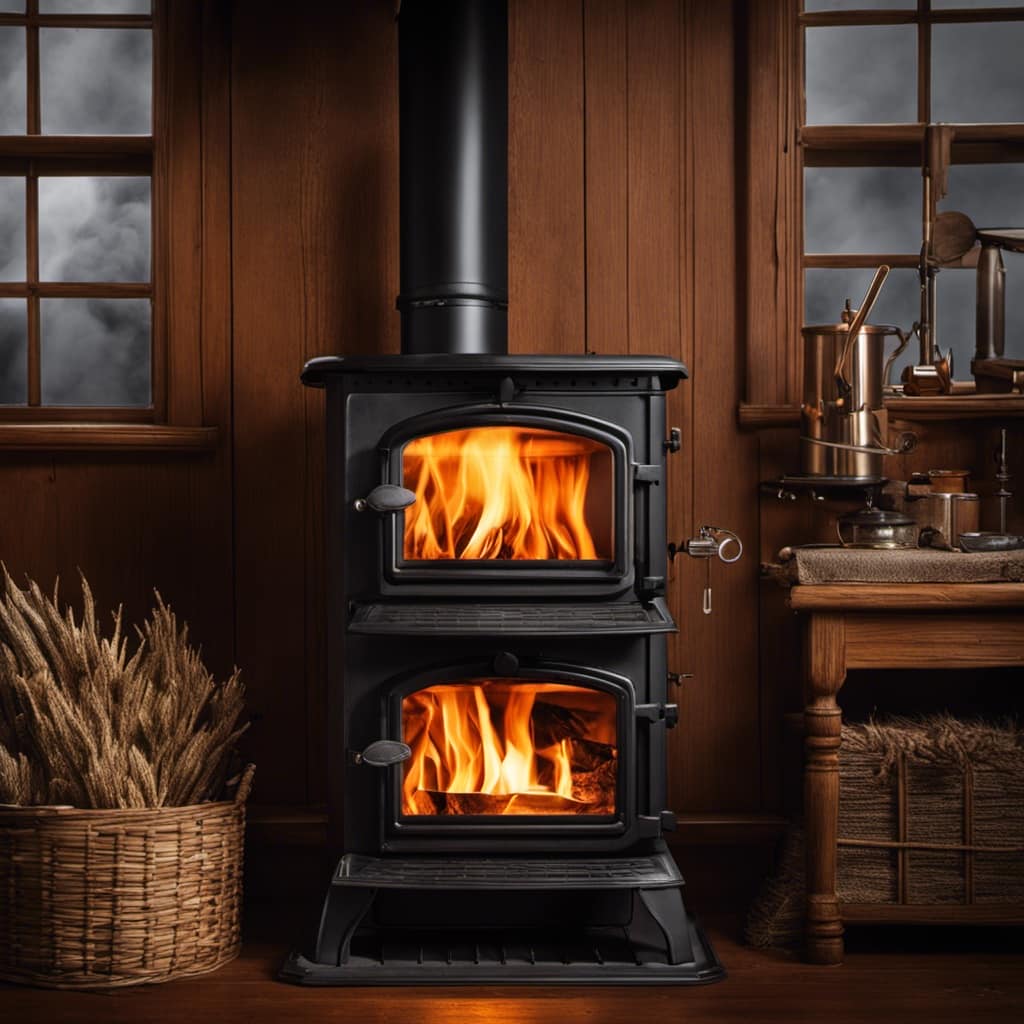
Regular inspection and cleaning of the damper will ensure it functions properly and keeps your wood stove operating efficiently.
Damper Operation Explained
To ensure proper airflow and prevent smoke from entering the room, it’s important to understand how the damper operates in a wood stove.
The damper is a mechanism that controls the amount of air that enters and exits the stove. It’s typically located above the firebox and can be adjusted to regulate the intensity of the fire. When the damper is fully open, it allows maximum airflow, resulting in a hotter fire. Conversely, when it’s closed, it restricts the airflow, reducing the fire’s intensity.
To maintain the damper, regular cleaning is necessary to remove any soot or debris that may have accumulated. If you’re experiencing issues with the damper, such as difficulty opening or closing it, it may require some troubleshooting. Check for any obstructions or damage and ensure that it’s properly lubricated.
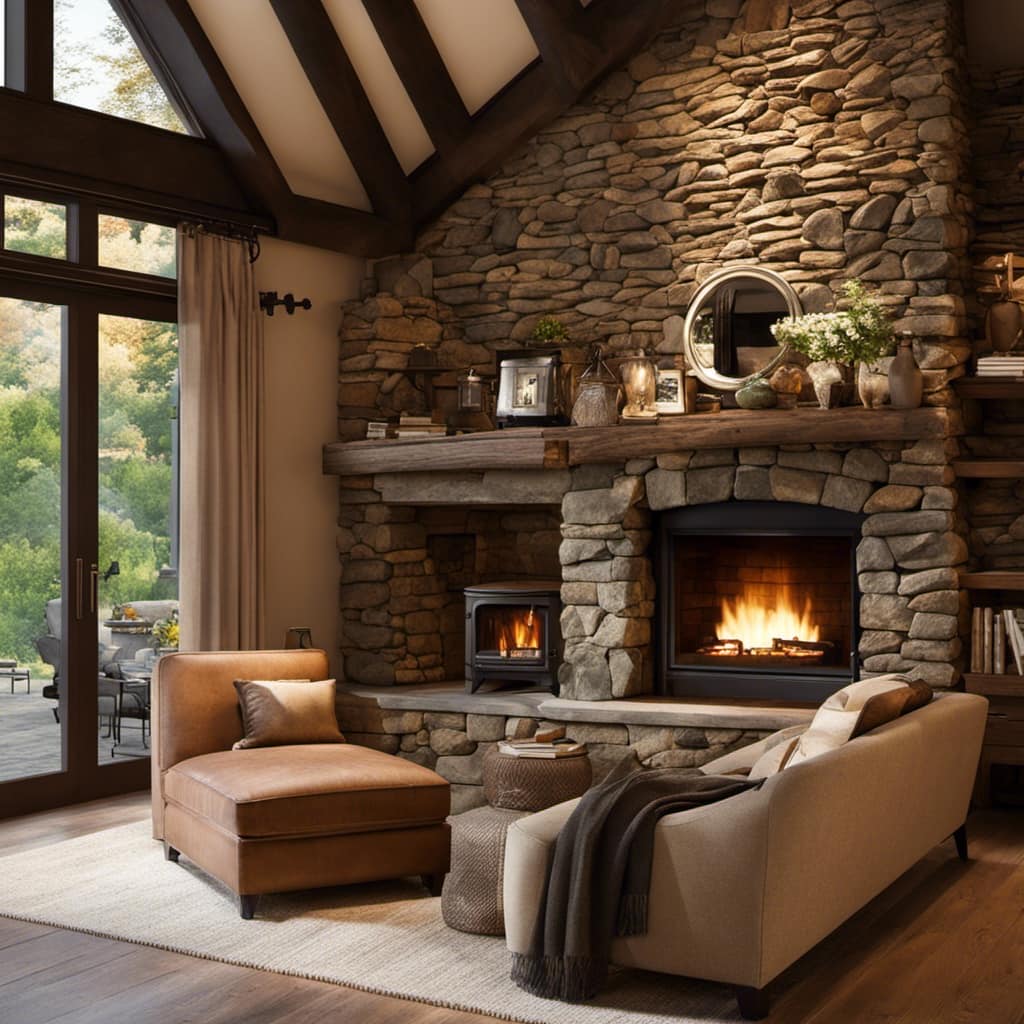
Controlling Temperature With a Damper
Controlling temperature with a damper is an essential technique for maintaining the ideal heat level in a wood stove. By adjusting the damper, I can regulate the amount of air flowing into the firebox, thus controlling the intensity of the fire and the heat output.
A closed damper restricts airflow, reducing the heat, while an open damper allows more air in, increasing the temperature.
Damper Techniques for Temperature
Using the damper on my wood stove is a great way to control the temperature in my home. Proper damper maintenance is essential for ensuring optimal performance. Here are some key techniques for temperature control:
Regular damper cleaning: Dust and debris can accumulate on the damper, affecting its functionality. Cleaning it regularly will ensure smooth operation.
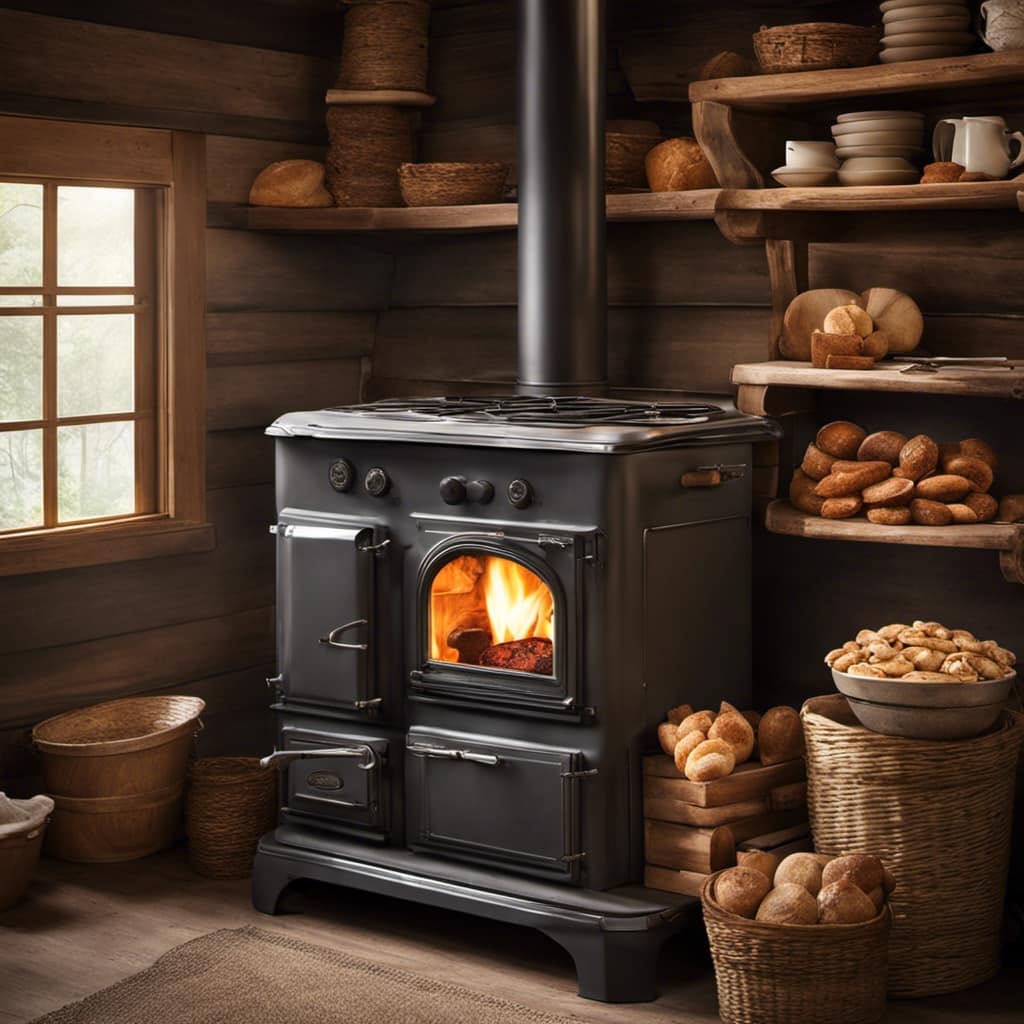
Checking for blockages: Sometimes, the damper can get blocked by creosote buildup or other obstructions. Clearing any blockages will help maintain efficient airflow.
Troubleshooting damper issues: If the damper isn’t opening or closing properly, check for loose or damaged parts. Tightening or replacing any faulty components can resolve the issue.
Adjusting Heat With Damper
Adjusting the heat in my home is made easier by properly maintaining and troubleshooting the damper. The damper is a crucial component of a wood stove, allowing me to control the amount of heat and airflow that enters the room. By adjusting the damper, I can regulate the temperature and ensure optimal comfort. To effectively adjust the heat, I follow a few key steps. Firstly, I check the position of the damper to ensure it is open or closed as desired. Secondly, I monitor the temperature in the room and make small adjustments to the damper as needed. Lastly, I pay attention to any unusual noises or signs of malfunction in the damper and address them promptly. By properly adjusting and maintaining the damper, I can enjoy a cozy and controlled environment in my home.
| Adjusting Heat with Damper |
|---|
| 1. Check damper position |
| 2. Monitor room temperature |
| 3. Make small adjustments to damper as needed |
| 4. Address any damper malfunctions promptly |
Maximizing Efficiency With a Damper
To get the most out of my wood stove, I rely on the damper to maximize efficiency. The damper is a crucial component that helps regulate the airflow and heat output of the stove. By properly adjusting the damper, I can control the burn rate and ensure that the fire burns efficiently, resulting in a longer-lasting heat and reduced fuel consumption.
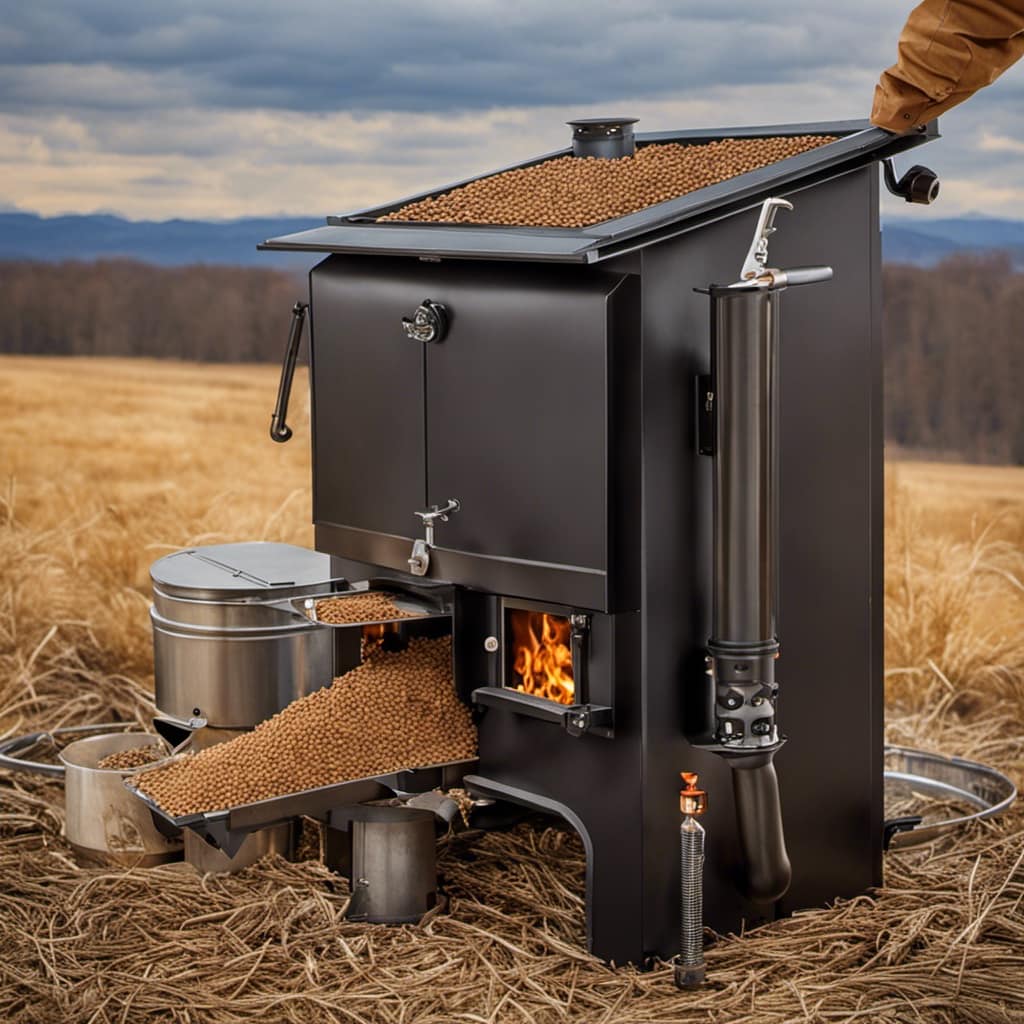
Here are the benefits of using a damper:
Improved heat distribution: By adjusting the damper, I can control the amount of air flowing into the stove, which in turn affects the intensity of the fire. By finding the right balance, I can evenly distribute the heat throughout the room, avoiding hot spots and ensuring a comfortable living environment.
Reduced fuel consumption: A properly adjusted damper allows for a more efficient burn, extracting more heat from each log. This means that I can use less wood while still enjoying a cozy and warm atmosphere. Not only does this save me money on fuel costs, but it also reduces my carbon footprint.
Extended burn time: By controlling the airflow with the damper, I can slow down the burn rate and make the fire last longer. This is particularly useful during overnight burns or when I want to keep the stove going for an extended period without constantly adding more wood.
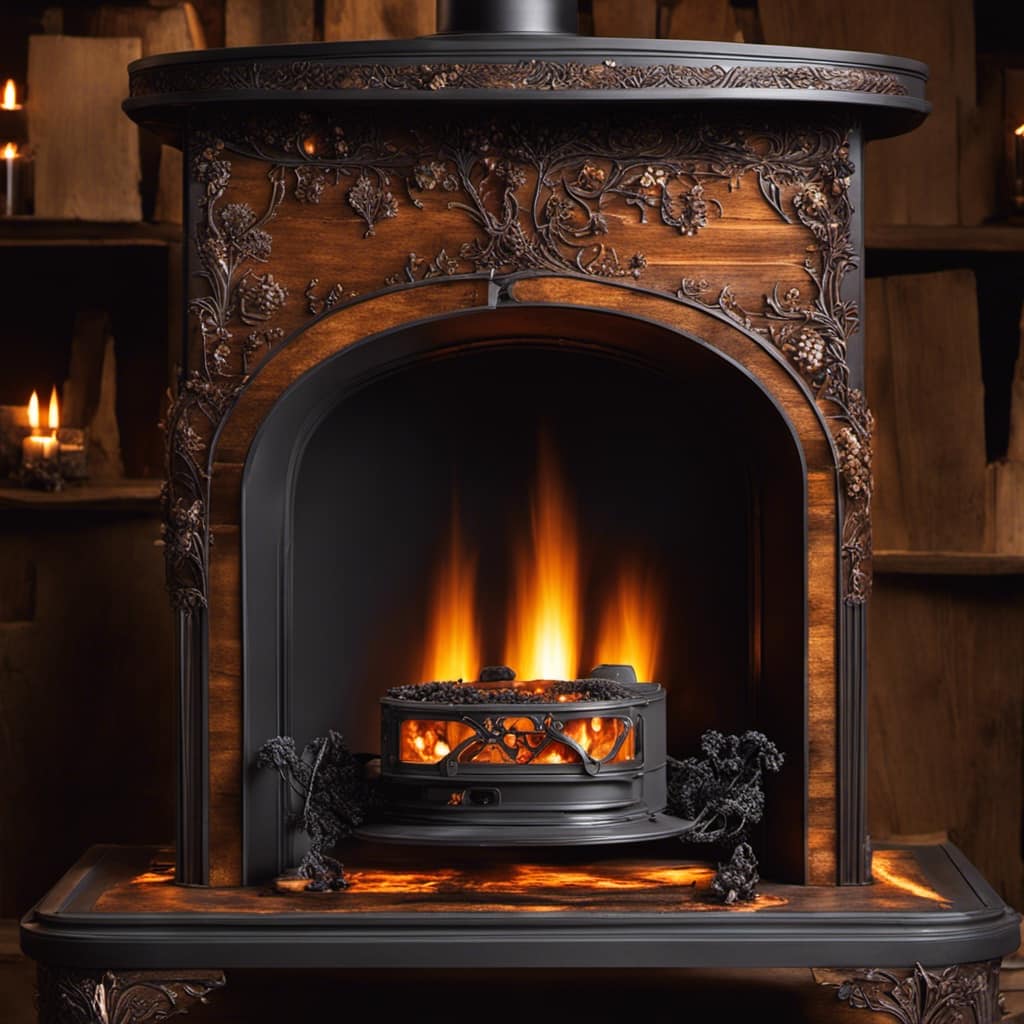
Different Types of Dampers for Wood Stoves
I have discovered that there are various types of dampers available for maximizing the efficiency of my heating system. When it comes to wood stoves, dampers play a crucial role in controlling the airflow and heat output. By properly installing and maintaining the right type of damper, I can ensure that my wood stove operates at its peak performance.
Here are some types of dampers commonly used for wood stoves:
| Type of Damper | Description |
|---|---|
| Manual Damper | This type of damper is manually operated and allows me to adjust the airflow by opening or closing the damper. It is simple to use and requires regular maintenance to ensure smooth operation. |
| Automatic Damper | An automatic damper is equipped with a thermostat that regulates the airflow based on the desired temperature. It provides hands-free operation and can help maintain a consistent temperature in the room. |
| Bypass Damper | A bypass damper is designed to redirect the flue gases around the heat exchanger in order to maximize heat transfer and efficiency. It helps to reduce heat loss and improve the overall performance of the wood stove. |
| Barometric Damper | A barometric damper uses a weighted arm to control the airflow. It automatically adjusts the damper opening based on the draft conditions in the chimney. It is a popular choice for wood stoves as it helps maintain proper combustion and prevents backdraft. |
| Catalytic Damper | A catalytic damper is equipped with a catalyst that helps burn off any unburned gases or particles in the flue gases. It improves combustion efficiency and reduces emissions. However, it requires regular maintenance and replacement of the catalyst. |
When installing and maintaining dampers, it is important to follow the manufacturer’s instructions. Regular cleaning and inspection of the dampers are necessary to ensure they are functioning properly. I should also check for any signs of wear or damage and replace any worn-out parts. By selecting the right type of damper and taking good care of it, I can maximize the efficiency of my wood stove and enjoy a cozy and warm home.
Tips for Maintaining and Using a Damper Properly
Maintaining and using the damper properly ensures efficient airflow and optimal heat distribution throughout the room. As someone who’s been using a wood stove for many years, I’ve learned a few tips for keeping the damper in top shape. Here are some key points to consider:

Regular cleaning: It’s crucial to clean the damper regularly to prevent any buildup of creosote or debris. This can be done by using a chimney brush or a specialized damper cleaner.
Lubrication: Applying a small amount of high-temperature lubricant to the damper mechanism ensures smooth operation. This should be done at least once a year to prevent any sticking or stiffness.
Troubleshooting damper issues can be frustrating, but with the right knowledge, it can be resolved easily:
Stuck damper: If the damper is stuck in the closed position, it may be due to a buildup of creosote or rust. Cleaning and lubricating the damper can often solve this issue.
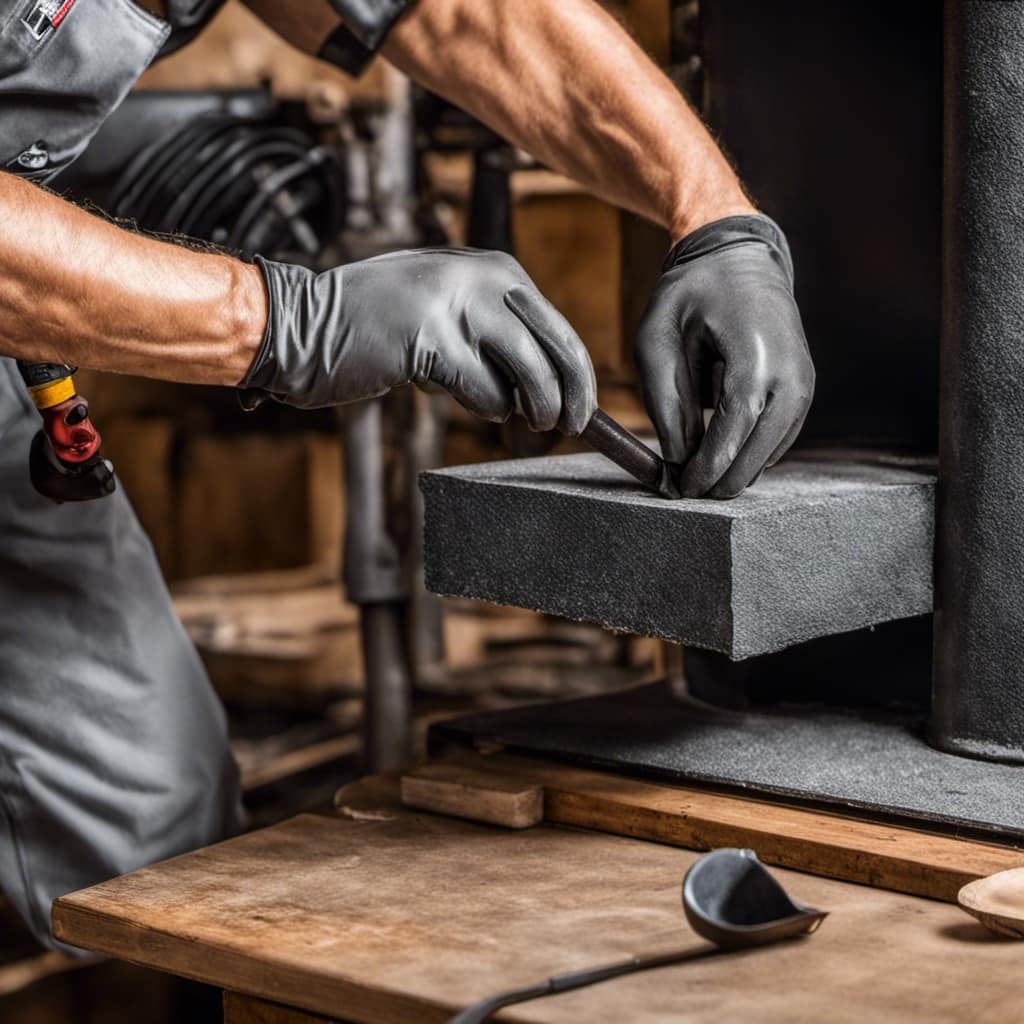
Inefficient airflow: If you notice that the room isn’t heating up properly, it could be a sign of a partially closed damper. Make sure the damper is fully open to allow for maximum airflow.
Can I Use Ashes from a Wood Stove to Make a Damper?
Yes, you can use wood stove ashes for making a damper. Wood stove ashes disposal methods vary, but they can be repurposed for various DIY projects, including making a damper. Just make sure the ashes are completely cool before using them for any project.
Frequently Asked Questions
How Often Should I Clean My Wood Stove Damper?
I think it’s important to regularly inspect your wood stove damper to ensure it’s functioning properly. Signs of a malfunctioning damper can include difficulty opening or closing, excessive smoke escaping into the room, or poor draft.
As for how often to clean it, it really depends on how often you use your wood stove. I’d recommend checking it at least once a season, and cleaning it if you notice any build-up or blockages.
Can a Damper Be Installed on Any Type of Wood Stove?
Installing a damper on a wood stove has its pros and cons. It can help regulate the airflow and improve the stove’s efficiency, but it may also restrict the heat output.
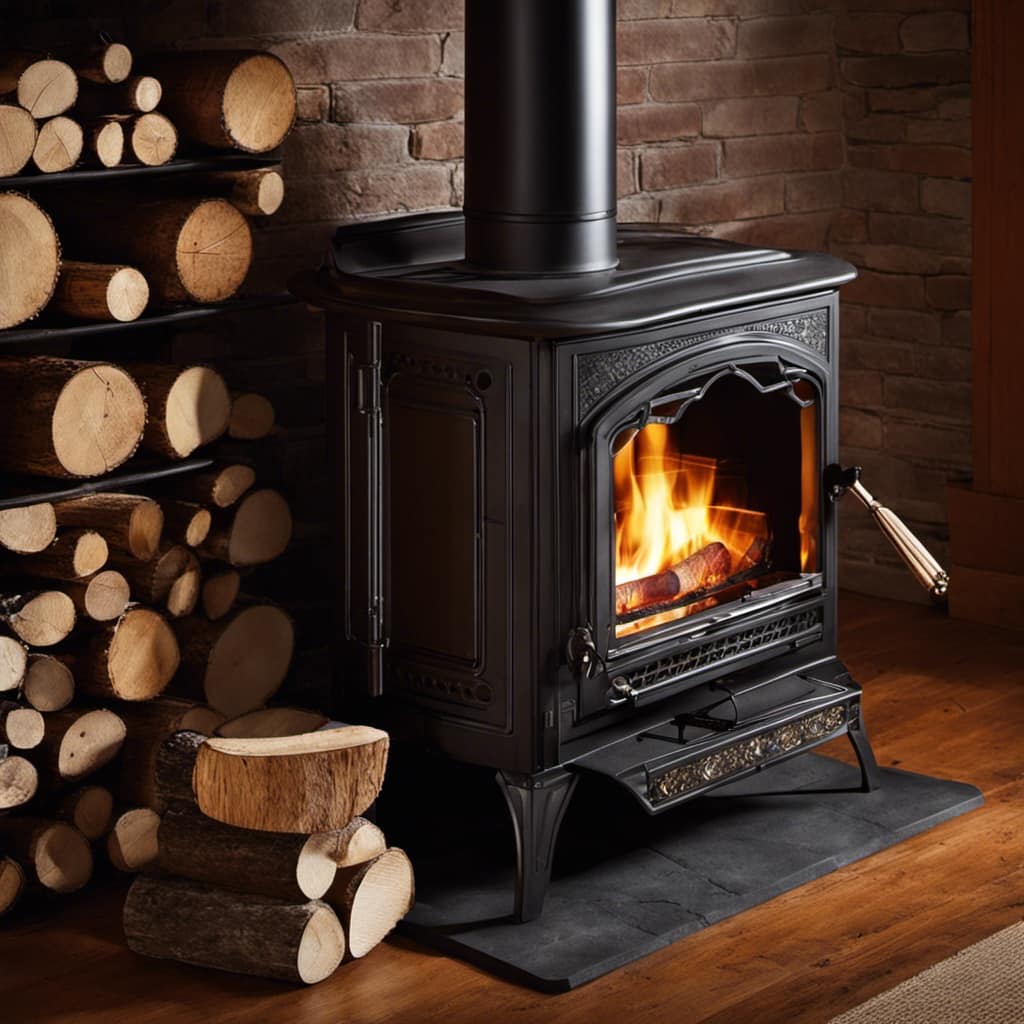
Proper installation is crucial, as it varies depending on the type of wood stove. For some stoves, a top-mounted damper is recommended, while others may require a side-mounted damper.
Regardless, consulting the manufacturer’s instructions and seeking professional guidance is essential to ensure safe and effective installation.
Is It Necessary to Have a Damper if My Wood Stove Is Already Equipped With an Air Control Knob?
Having an air control knob on your wood stove doesn’t necessarily make a damper unnecessary. While the air control knob helps regulate the amount of air entering the stove, a damper installation can further enhance the stove’s effectiveness.
A damper allows you to control the flow of smoke and gas out of the stove, improving combustion efficiency. It also helps to retain heat in the stove, increasing its overall efficiency.

Therefore, having a damper can be beneficial even if your wood stove already has an air control knob.
Can a Damper Help Reduce Smoke Emissions From a Wood Stove?
Using a damper on a wood stove can definitely help reduce smoke emissions. It’s a great tool for regulating airflow and controlling the combustion process.
Regular maintenance of the damper is important to ensure it functions properly. By adjusting the damper, you can optimize the burn and minimize smoke production.
The benefits of using a damper go beyond just reducing smoke. It also helps improve efficiency and heat distribution in the room.
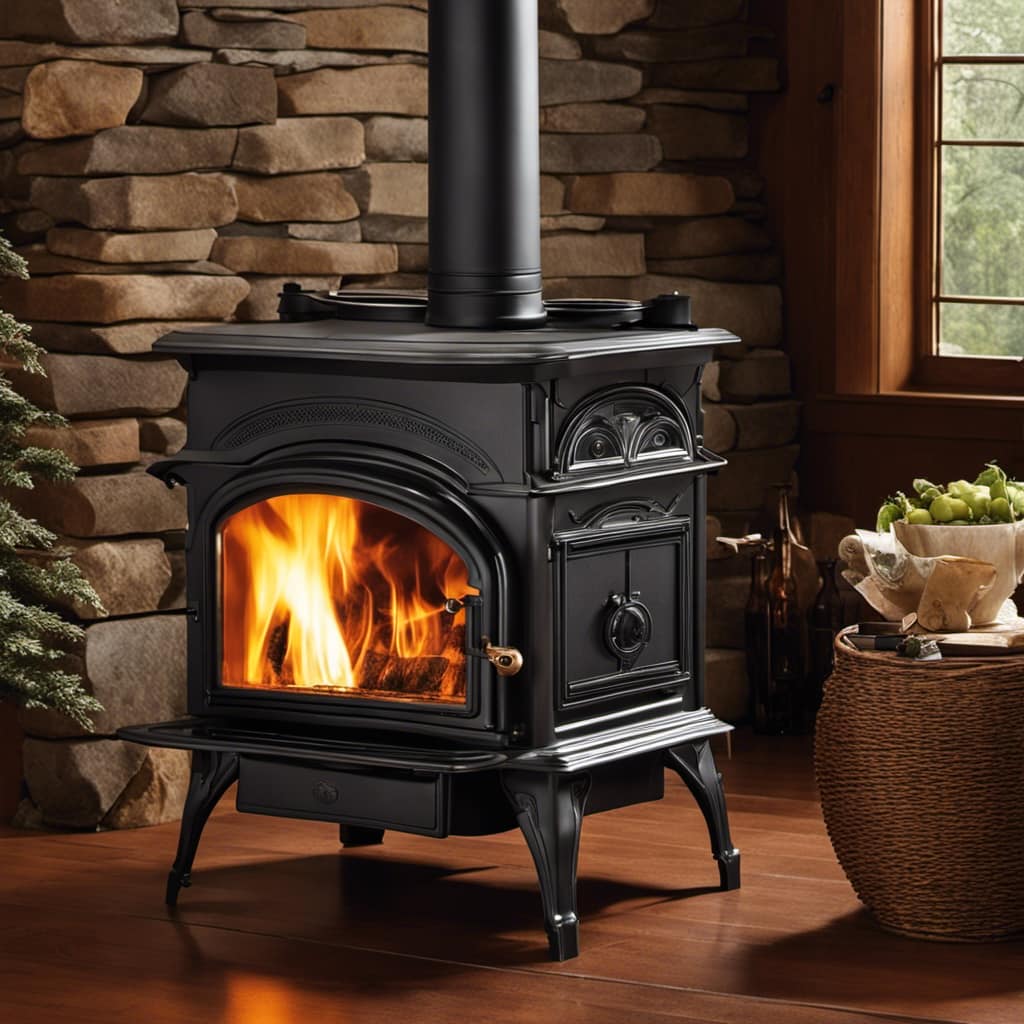
Are There Any Safety Precautions I Should Take When Operating a Wood Stove Damper?
When operating a wood stove damper, there are some important safety precautions to keep in mind.
First, always ensure that the damper is fully open before starting a fire to allow for proper airflow.
Additionally, regularly inspect the damper for any signs of damage or blockage and clean it as needed to maintain optimal performance.
Lastly, never leave a fire unattended and always keep a fire extinguisher nearby in case of emergencies.
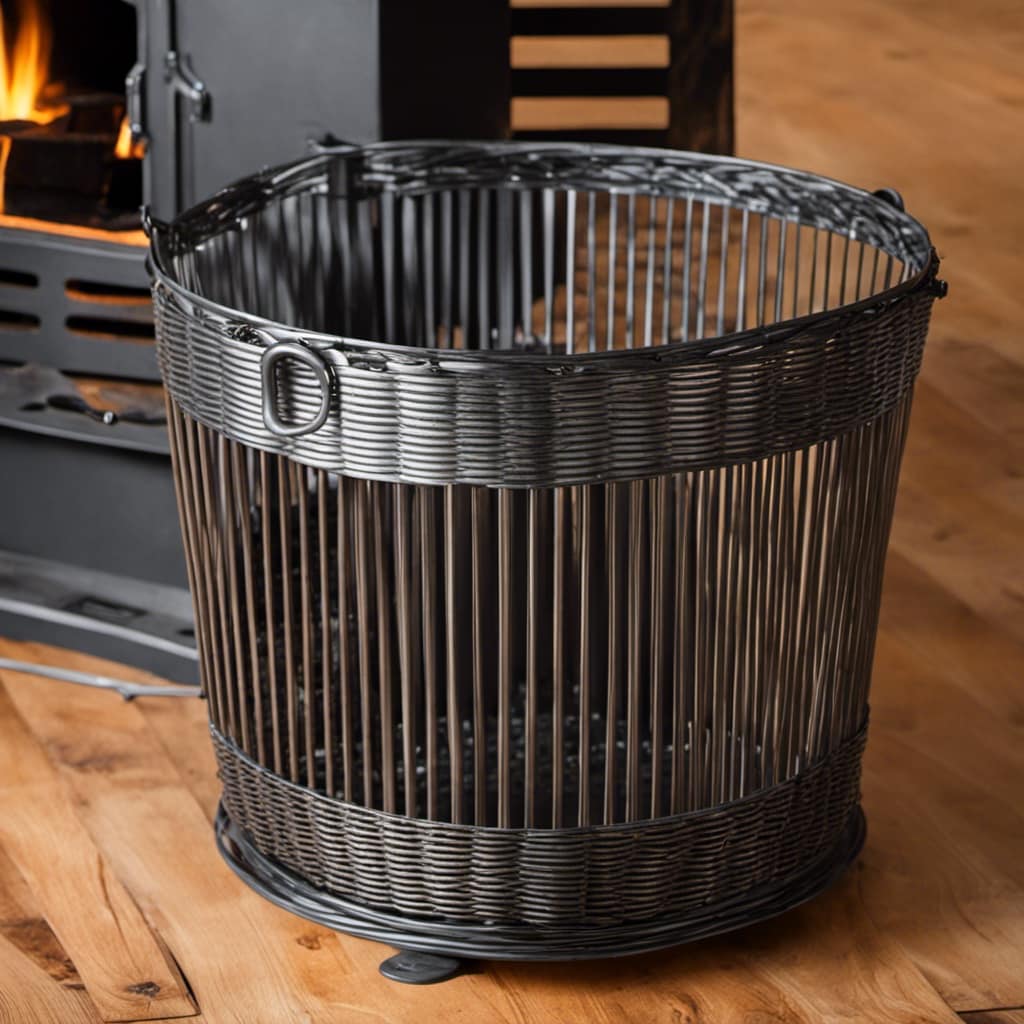
Conclusion
In conclusion, a damper on a wood stove is a crucial component that allows for proper airflow regulation and temperature control. By adjusting the damper, one can maximize the stove’s efficiency and ensure a comfortable and cozy environment.
Different types of dampers are available, and proper maintenance and usage are key to their effectiveness.
So, when it comes to wood stoves, remember the importance of a well-functioning damper for a warm and efficient heating experience.
Growing up surrounded by the vast beauty of nature, Sierra was always drawn to the call of the wild. While others sought the comfort of the familiar, she ventured out, embracing the unpredictable and finding stories in the heartbeat of nature.
At the epicenter of every remarkable venture lies a dynamic team—a fusion of diverse talents, visions, and passions. The essence of Best Small Wood Stoves is crafted and refined by such a trio: Sierra, Logan, and Terra. Their collective expertise has transformed the platform into a leading authority on small wood stoves, radiating warmth and knowledge in equal measure.







